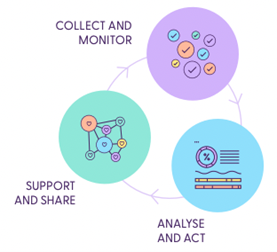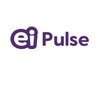A whole school approach to wellbeing is more than just catering to the welfare needs of a few individual students; rather, it considers how to promote all students’ social and emotional skills and healthy behaviours across the many dimensions of school life.
Whole school wellbeing inventions must be evidence based, that is, tested with a randomised control trial, as opposed to simply informed by evidence.
While there are a number of high quality frameworks available, each school should assess them according to their results in the areas relevant to their particular circumstances. 1
Examples of frameworks that support the implementation of whole school wellbeing programs include The Nest, The Australian Student Wellbeing Framework, State-based Wellbeing Frameworks and more.
Towards Whole School Wellbeing
Whole school wellbeing programs should address a number of wellbeing domains across a variety of settings including school, home and community. While individual circumstances must be taken into account, there are a number of schoolwide, classroom and community practices that should be considered when designing your whole school wellbeing plan.
School Wide Practices
Executive Commitment
The commitment of the executive to the principles underlying the provision of school wellbeing programs is vital for the motivation of the staff who are tasked with its implementation. 2
Staff Wellbeing
Staff need active support from authorities, administration and colleagues to effectively deal with challenges of their profession. 3 This could involve workplace design, culture, staff resilience and personal social and emotional skills.
Data Collection
Utilising data to inform interventions increases the chance of effectiveness because it allows educated decision making. In the case of whole school wellbeing, this involves collecting information at a student level, as well as assessing progress at different levels of the organisation. Student wellbeing can be measured informally, through verbal check-ins or meetings with teachers or counsellors, or with more formal measuring tools like electronic wellbeing check-ins and surveys.

Implementing a wellbeing check-in tool
ei Pulse is a wellbeing tool that enables students to check-in weekly and share how they are feeling in 60 seconds. The tool delivers a real-time snapshot into students’ wellbeing.
- School leaders have a quick snapshot into the overall health of school, and the ability to get ahead of the wellbeing curve
- Teachers can access their classroom sentiment and historical student check-in data to identify patterns and address issues before they become problems
- Wellbeing teams & counsellors have the friction-free ability to connect with students who need early intervention. This allows the staff to use their time more effectively
This tool can also be used to track the impact various initiatives and approaches have on student wellbeing, by monitoring student responses.
Teacher Professional Learning
Supporting teachers with resources at the ground level allows for a smooth and responsive transition through the various levels of wellbeing support. Further opportunities for collaborative learning through mentoring programmes, learning communities and professional networks, can equip teachers to best handle sensitive issues.
Student Voice and Inclusion
In order to ensure the holistic nature of the program, it is vital that opportunities are provided for authentic student decision making over matters that affect them, both school wide and within the classroom.
Classroom
Supportive Environment
A supportive classroom environment forms the foundation for the growth of students’ academic and social-emotional skills. Students who experience support from their teachers are more likely to transfer their skills from theory to practice; while thinking skills could lead to higher levels of academic engagement and achievement, social-emotional skills could lead to higher levels of wellbeing.
Teaching Practices
An explicit wellbeing curriculum programme should be designed 4 to enable students to engage in tasks that may promote their understanding of emotional and social competencies alongside their academic learning. Many schools either create their own teaching and learning program or purchase an evidence based wellbeing and resilience curriculum, to ensure that social and emotional skills are explicitly discussed in individual classrooms.
Best Practice Criteria
Ultimately, high quality instruction must meet a set of criteria represented by the acronym SAFE5 :
Sequenced: activities that are step by step, and coordinated in their approach to skill development, Active forms of learning: that help students practise and master new skills, Focused: curriculum that intentionally develops social-emotional skills and Explicit: targeting specific skills and attitudes.
Community
A whole school wellbeing program does not begin and end at the school gate. Creating connections across the community can involve, but is not limited to:
- Providing information and training to parents about school policies and wellbeing approaches at school and for use within the home; supporting the needs of families so that they may be best placed to support their children.
- Strengthening the home/school communication system, which may include newsletters, interviews, or other electronic communication systems.
- Strengthening relationships with external healthcare providers to ensure that it is as straightforward as possible for educators to identify needs and refer students to relevant help.
- Building partnerships with community groups to ensure a culturally respectful environment and a two-way exchange of knowledge.
- Holding events at school so that all members of the community can work together on a shared goal.
Download the eBook on ‘Whole School Approach to Wellbeing’ to access:
- Annual wellbeing plan guide: A step-by-step checklist of how to implement whole school wellbeing
- Assessment rubric to note your progress and needs
References
1. Runions et al. (2021)
2. Makoelle (2014)
3. von der Embse et al. (2019)
4. Durlak et al. (2011)
5. Durlak et al. (2011)














